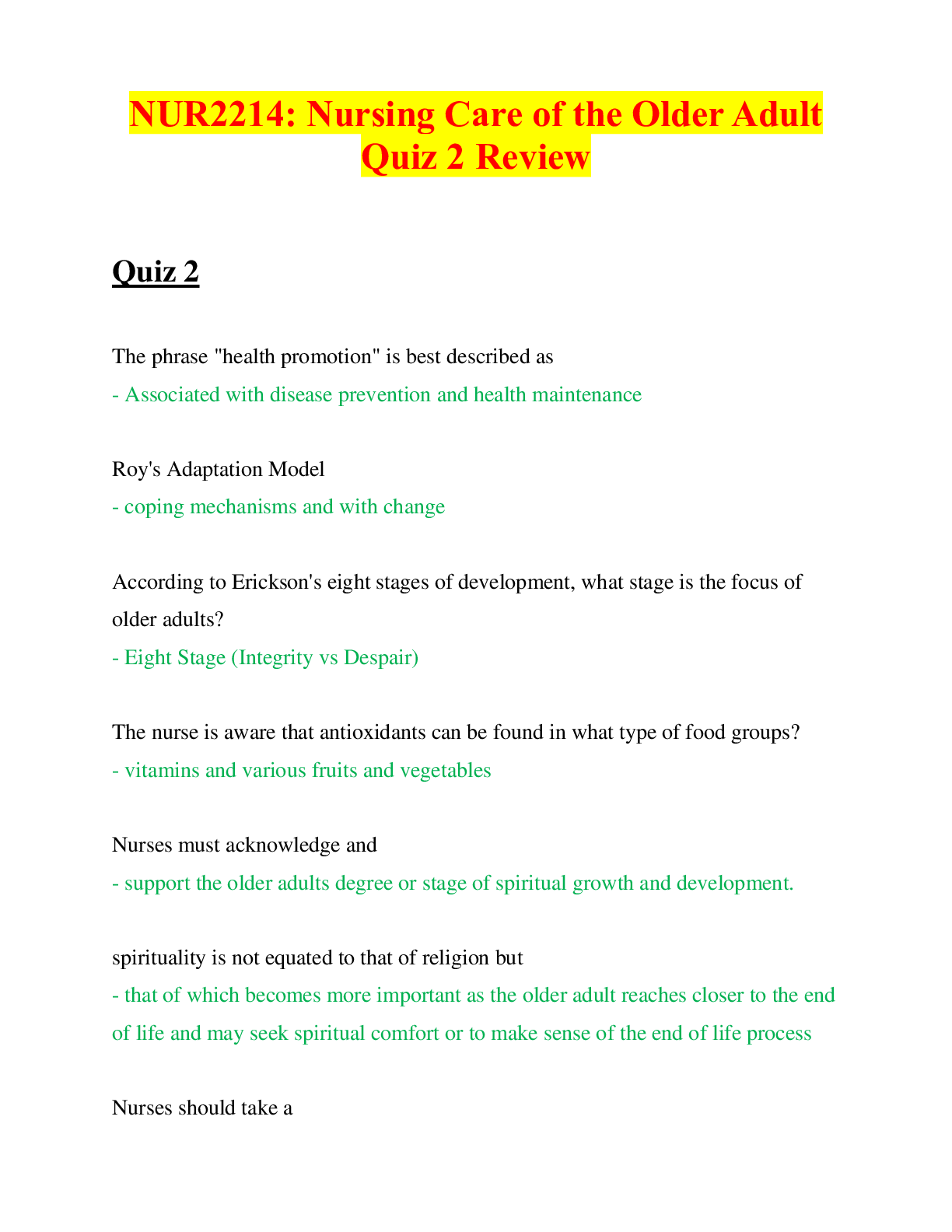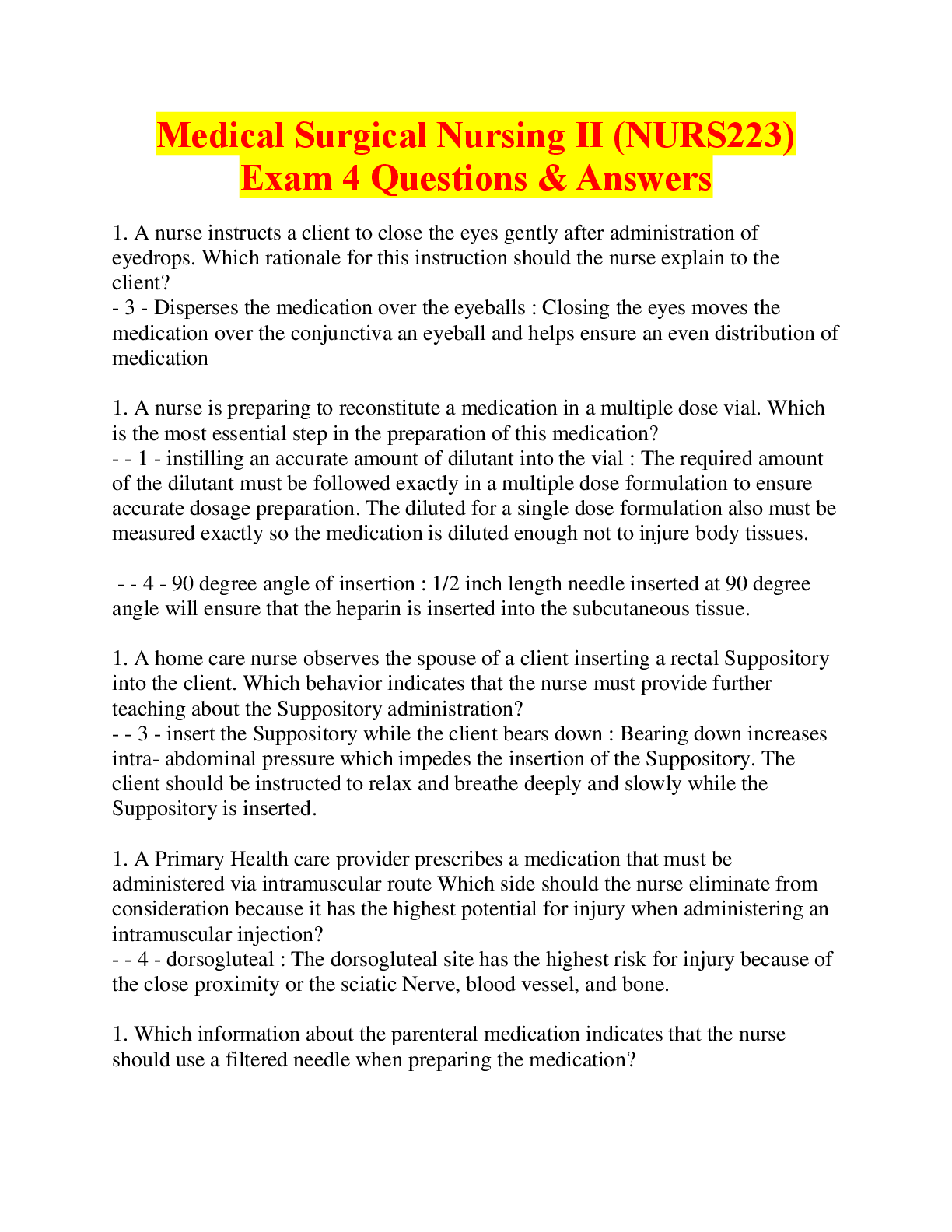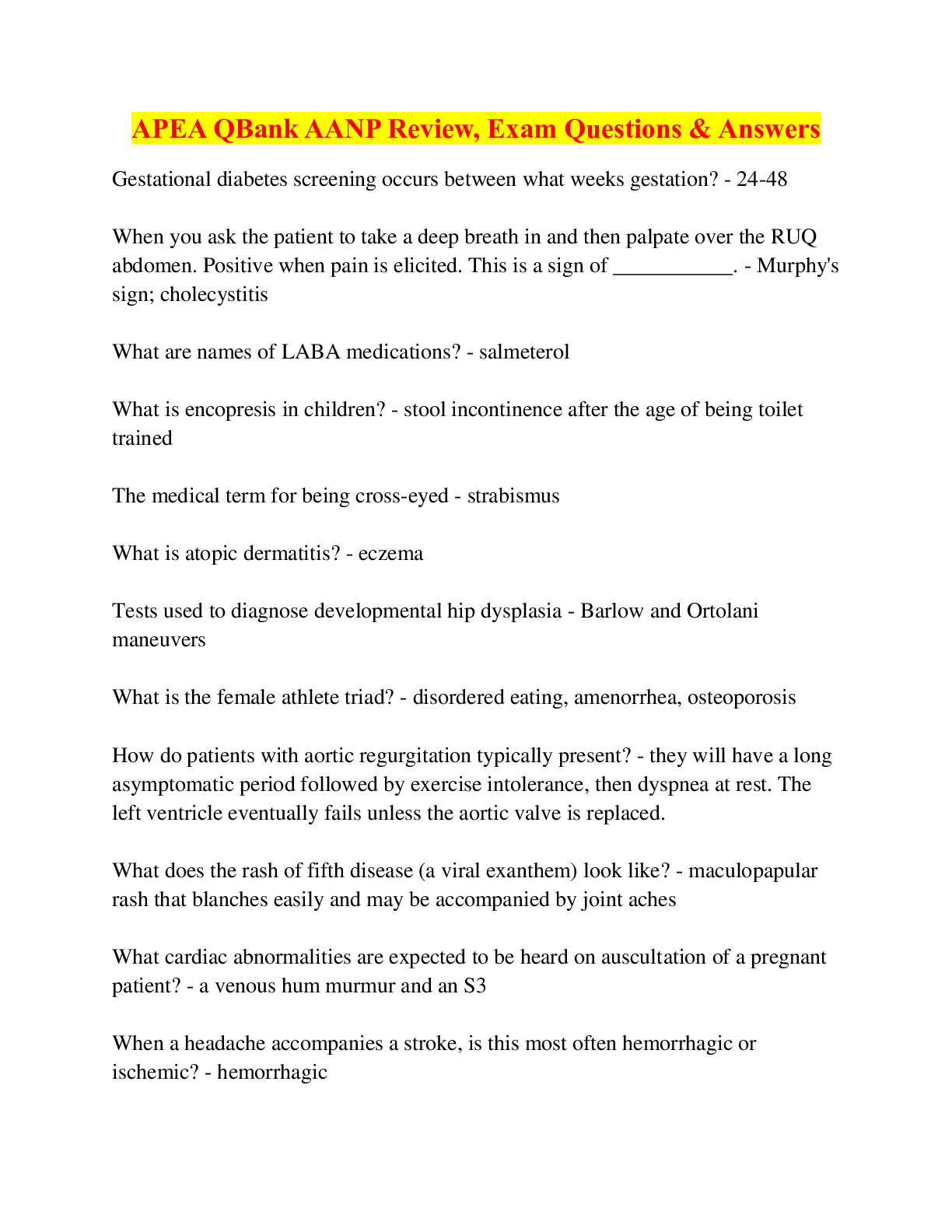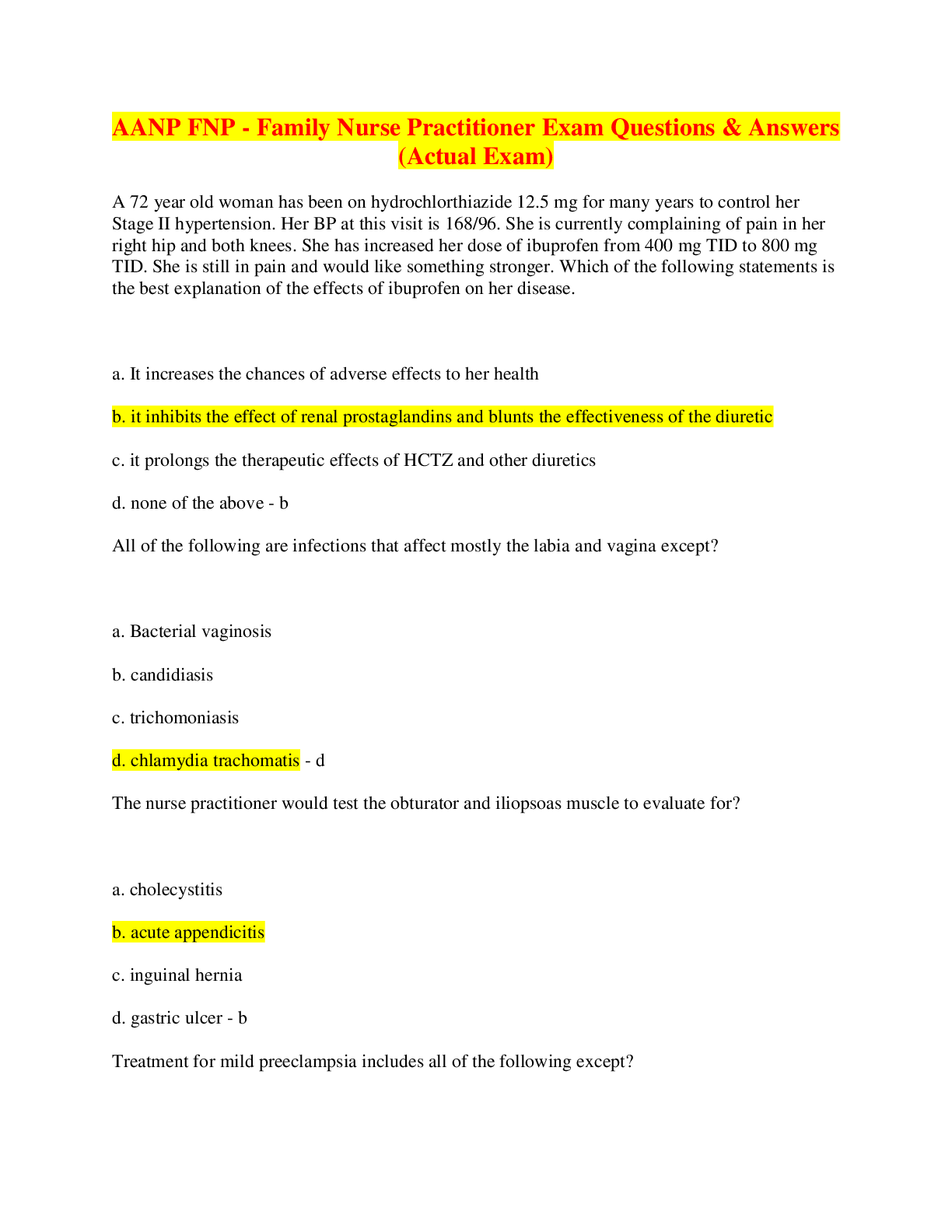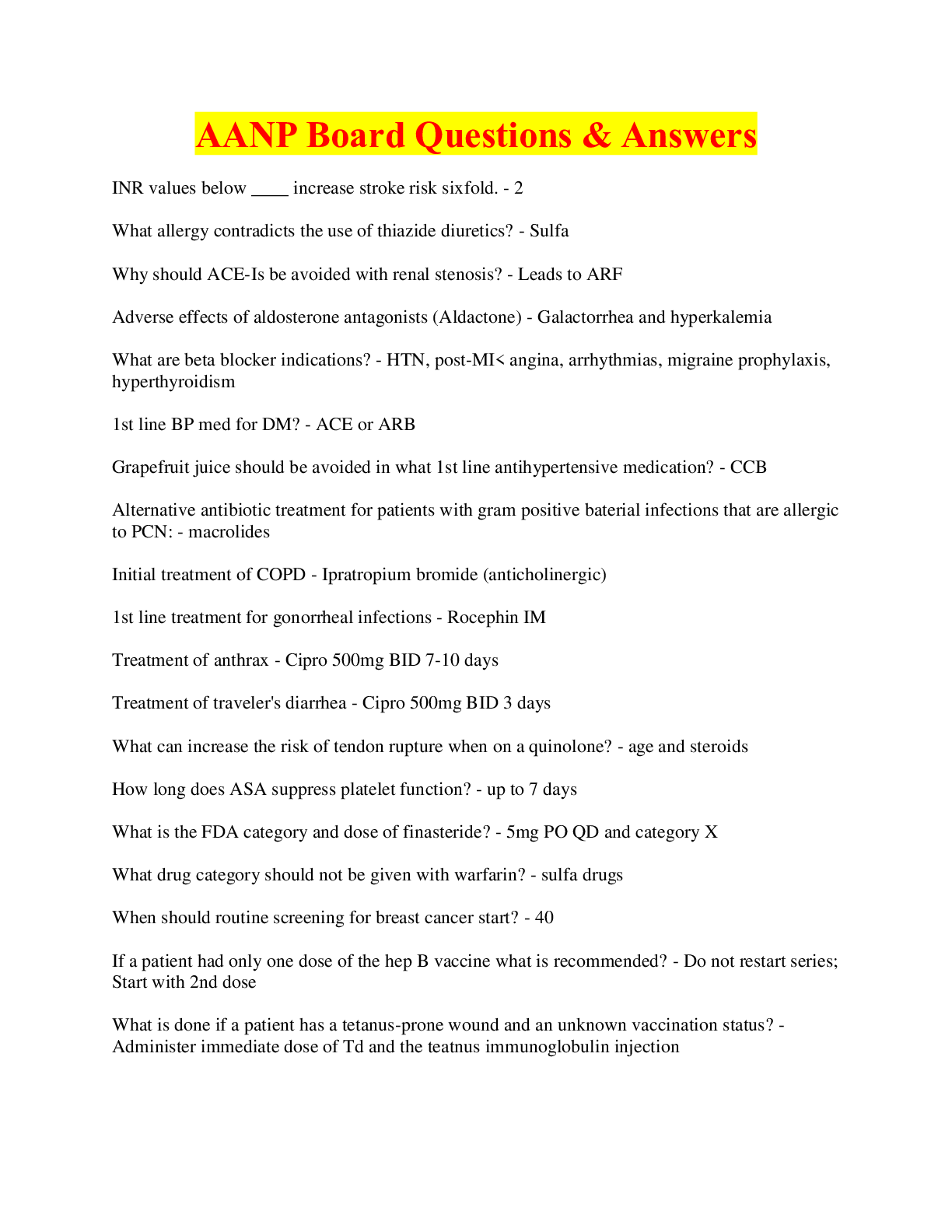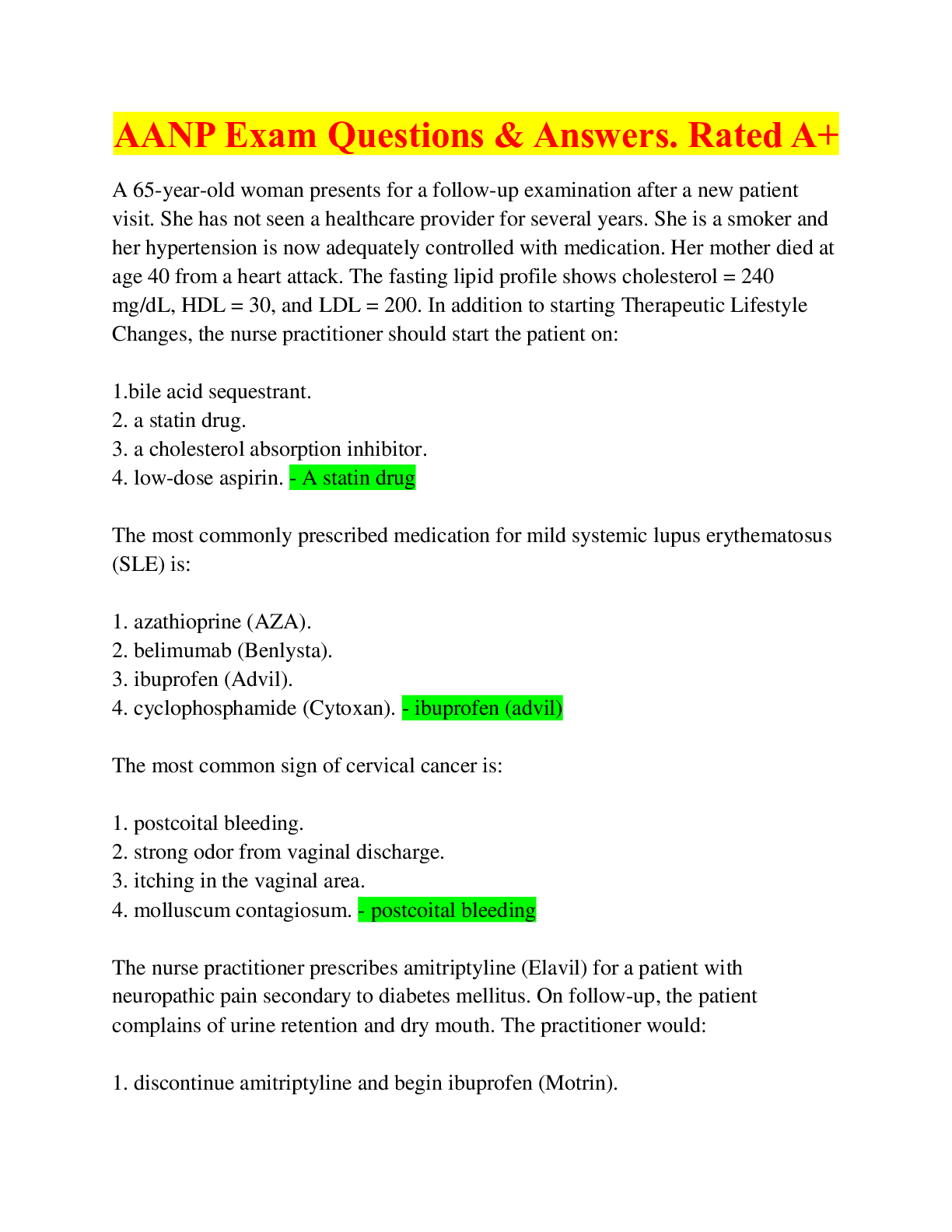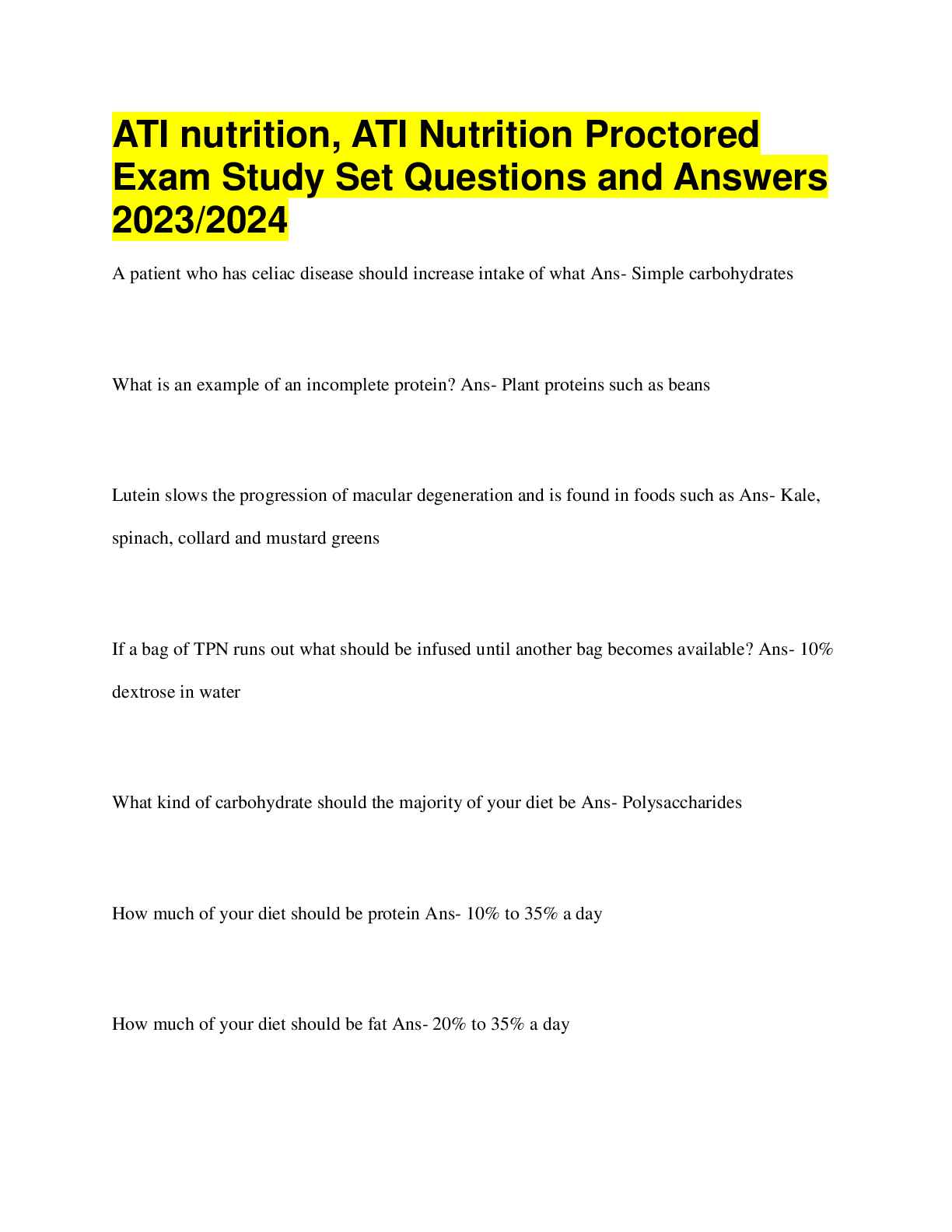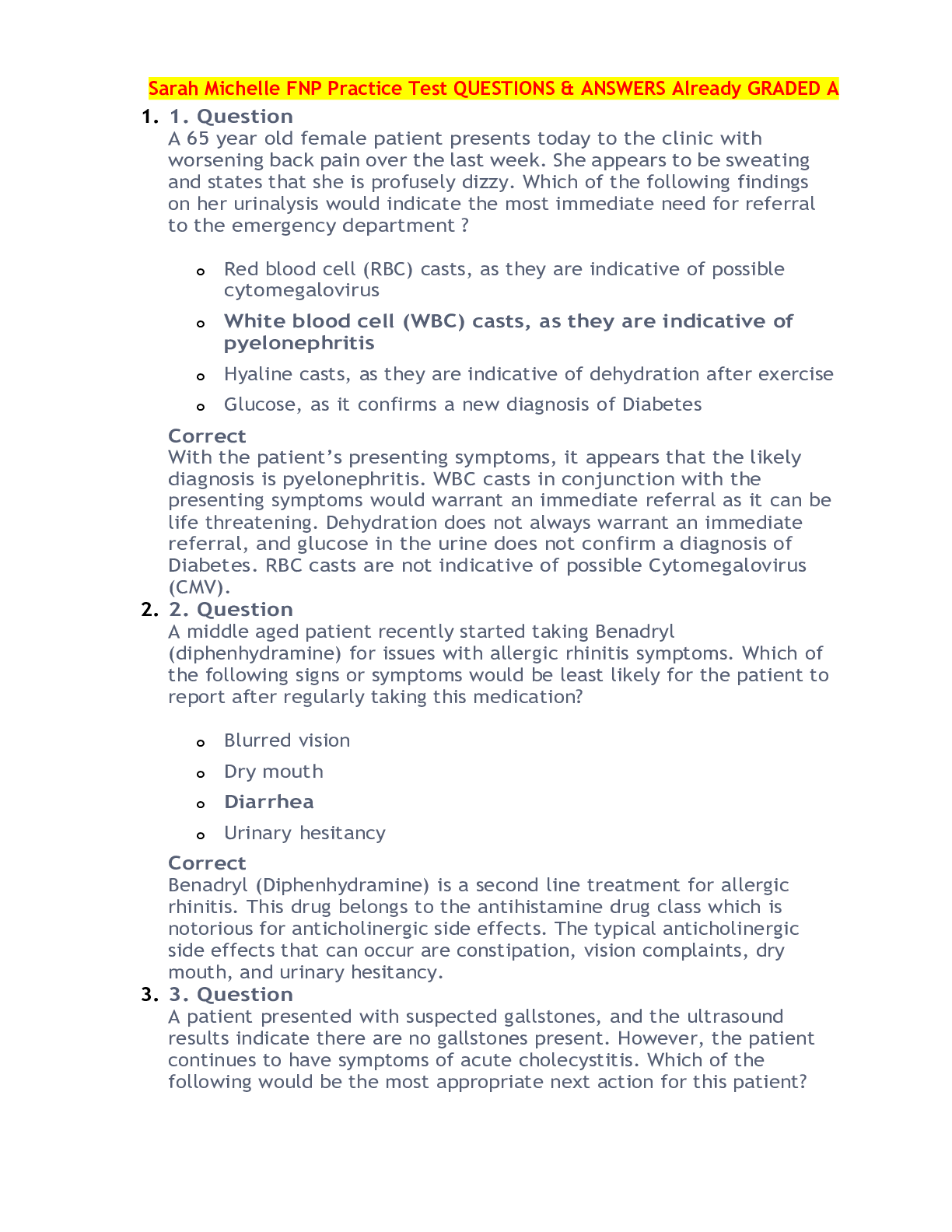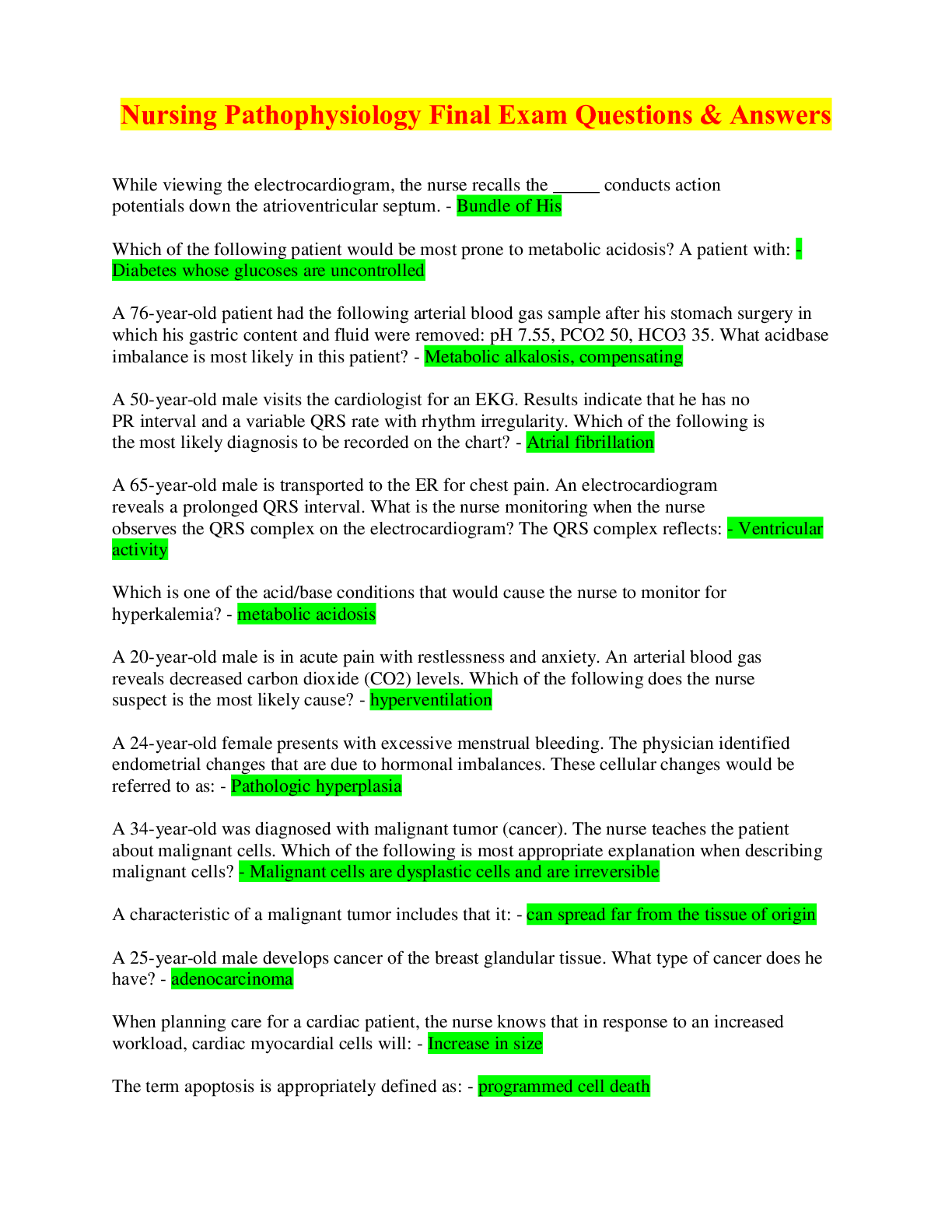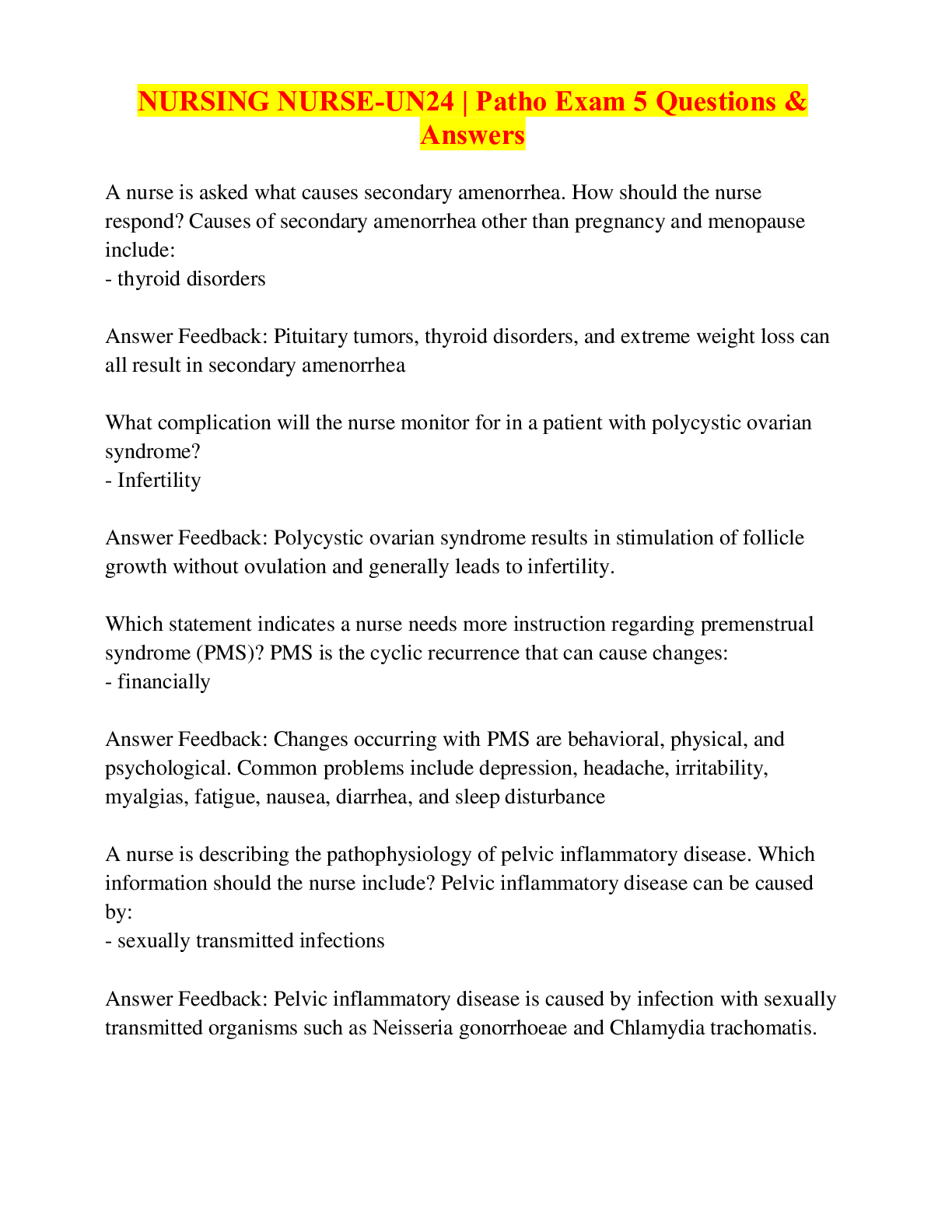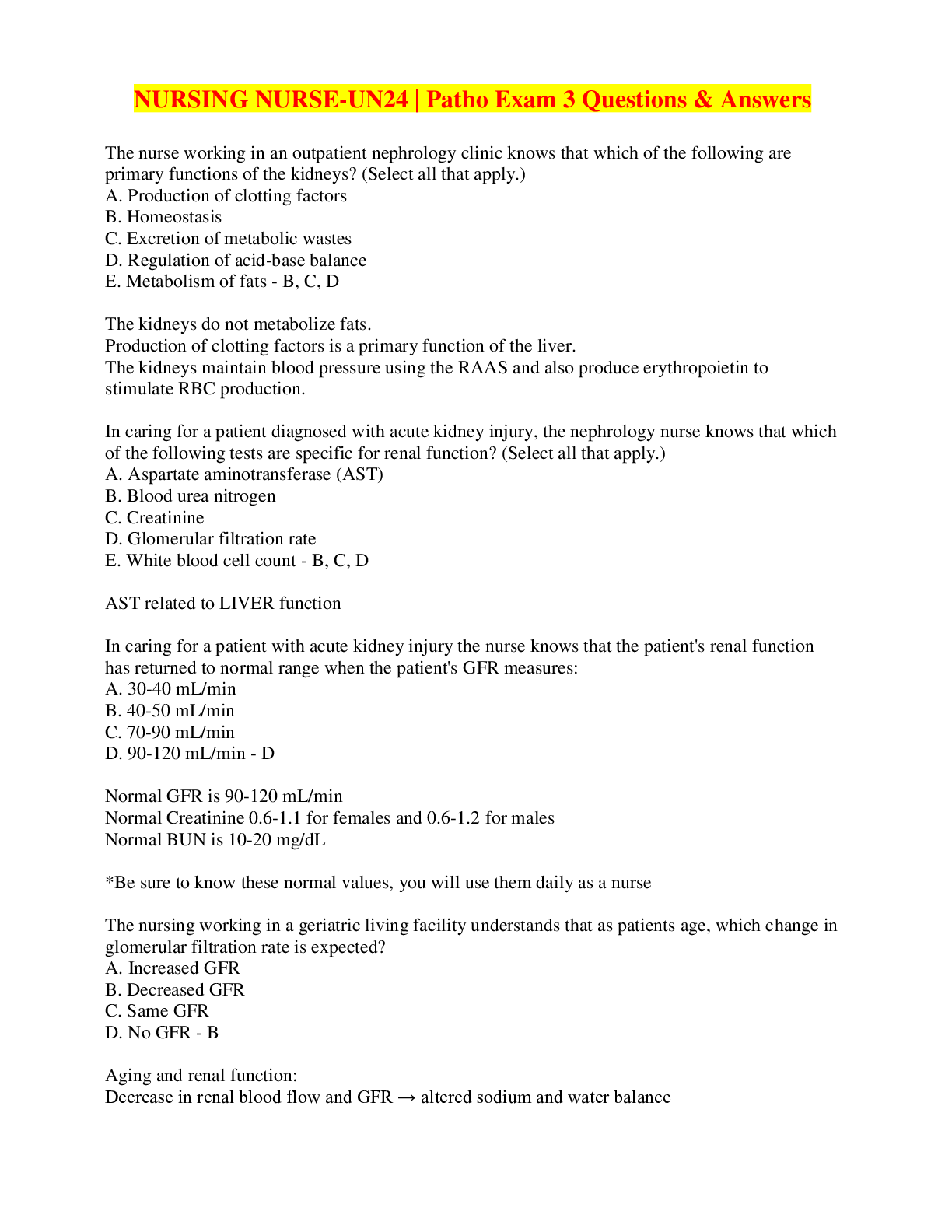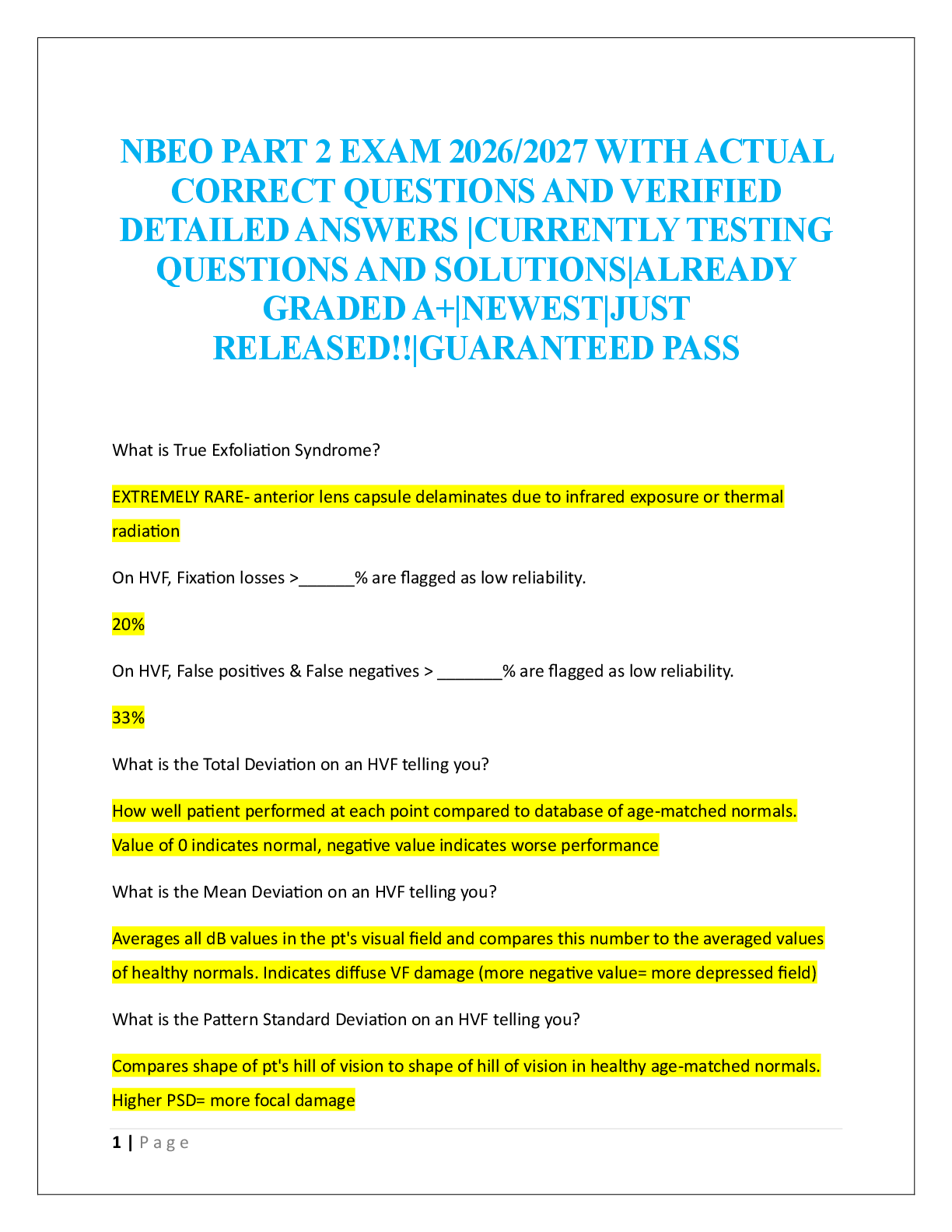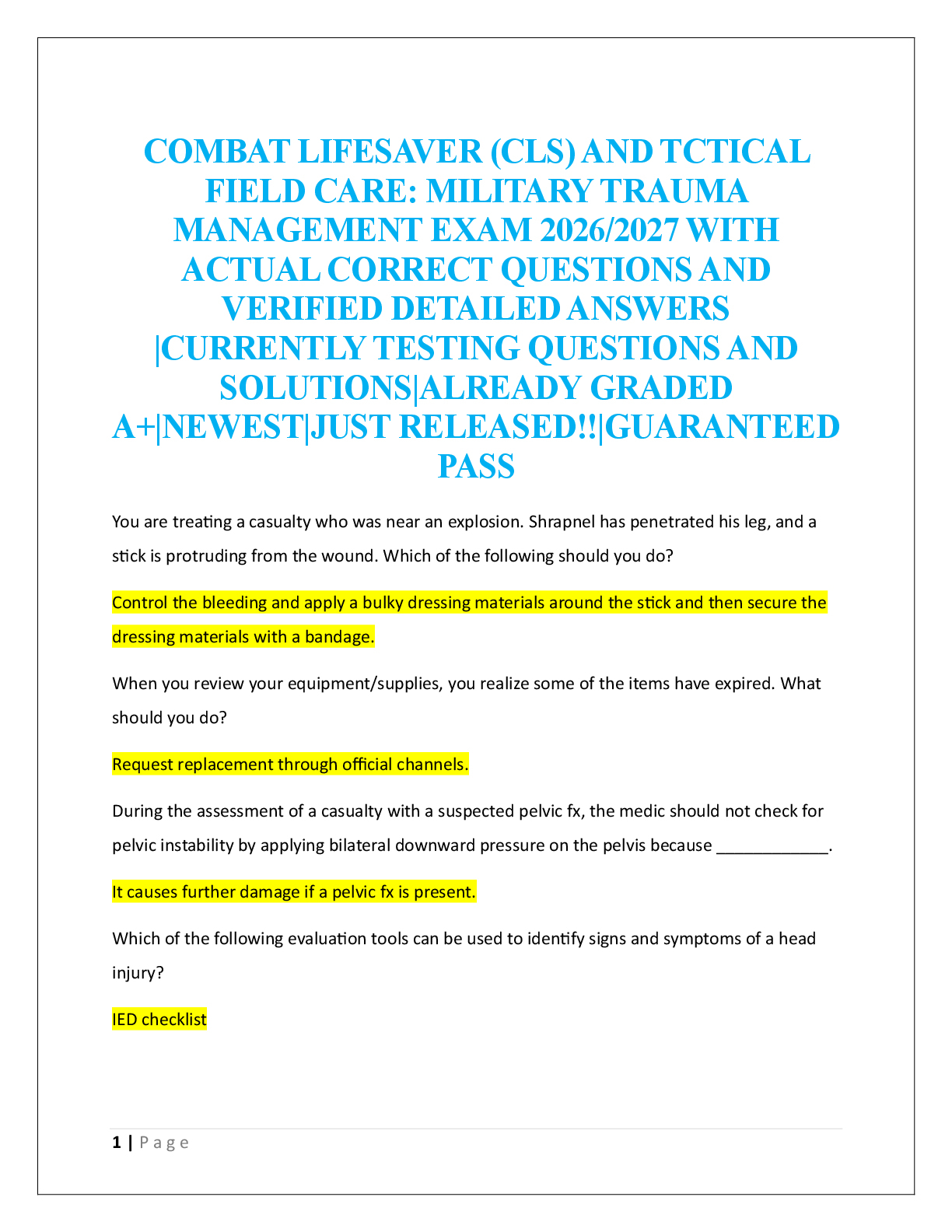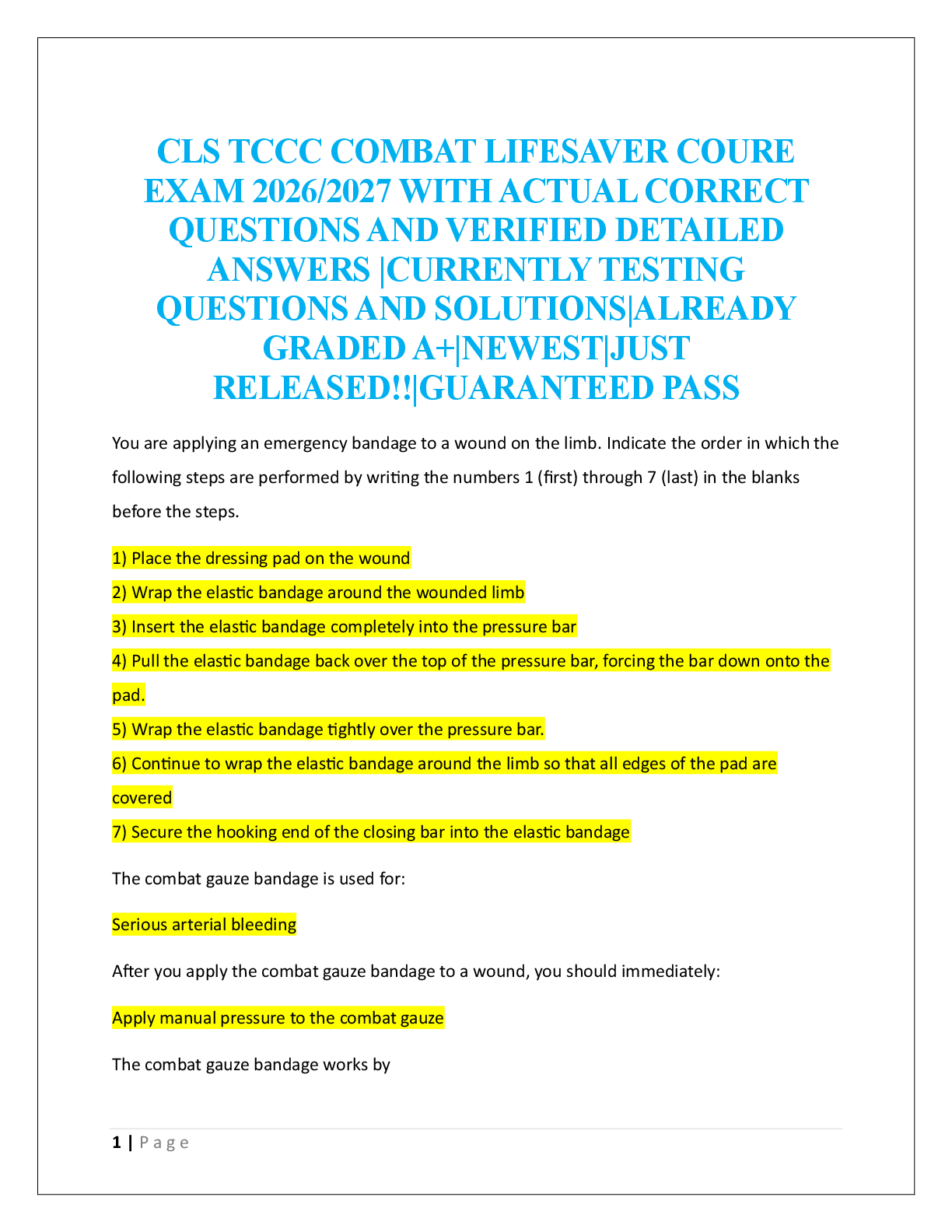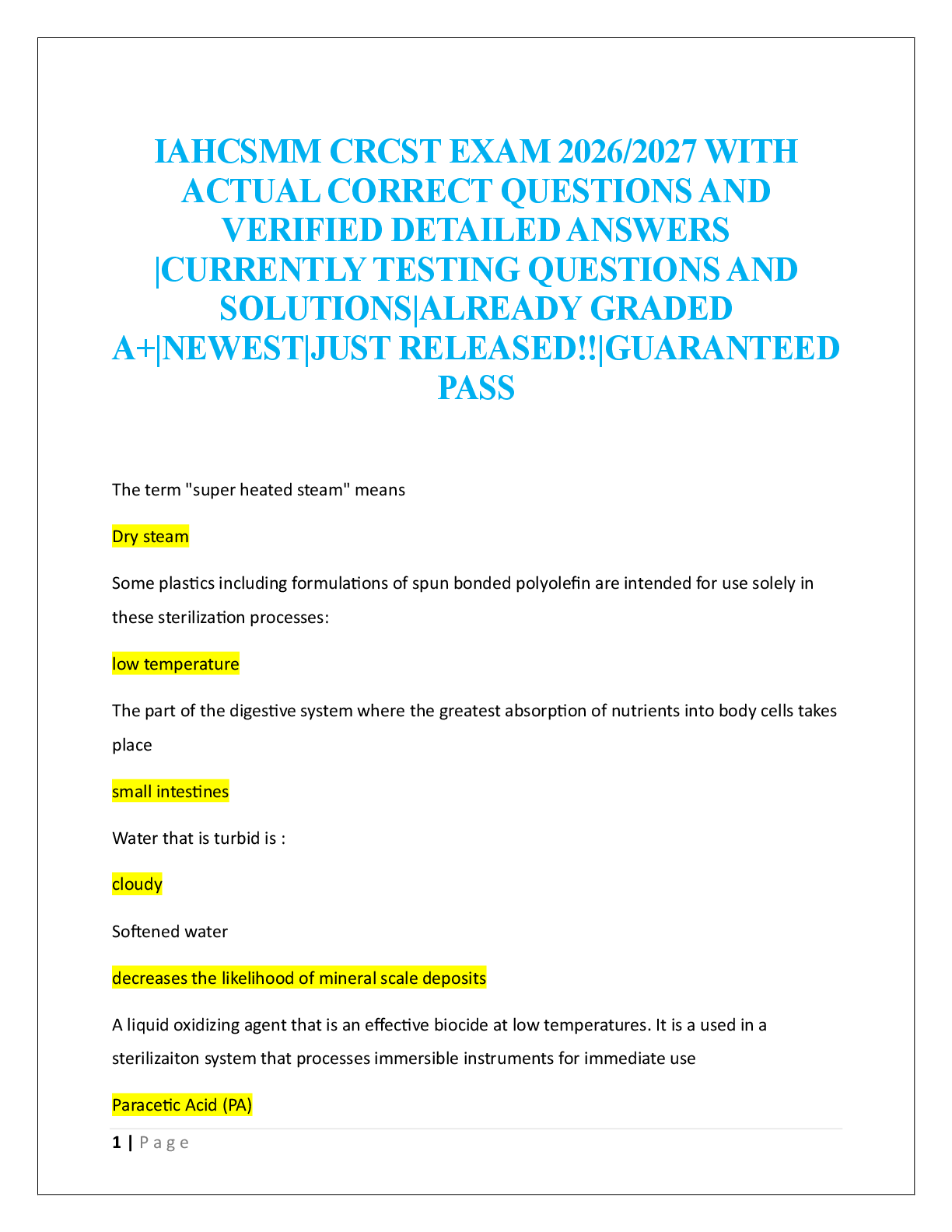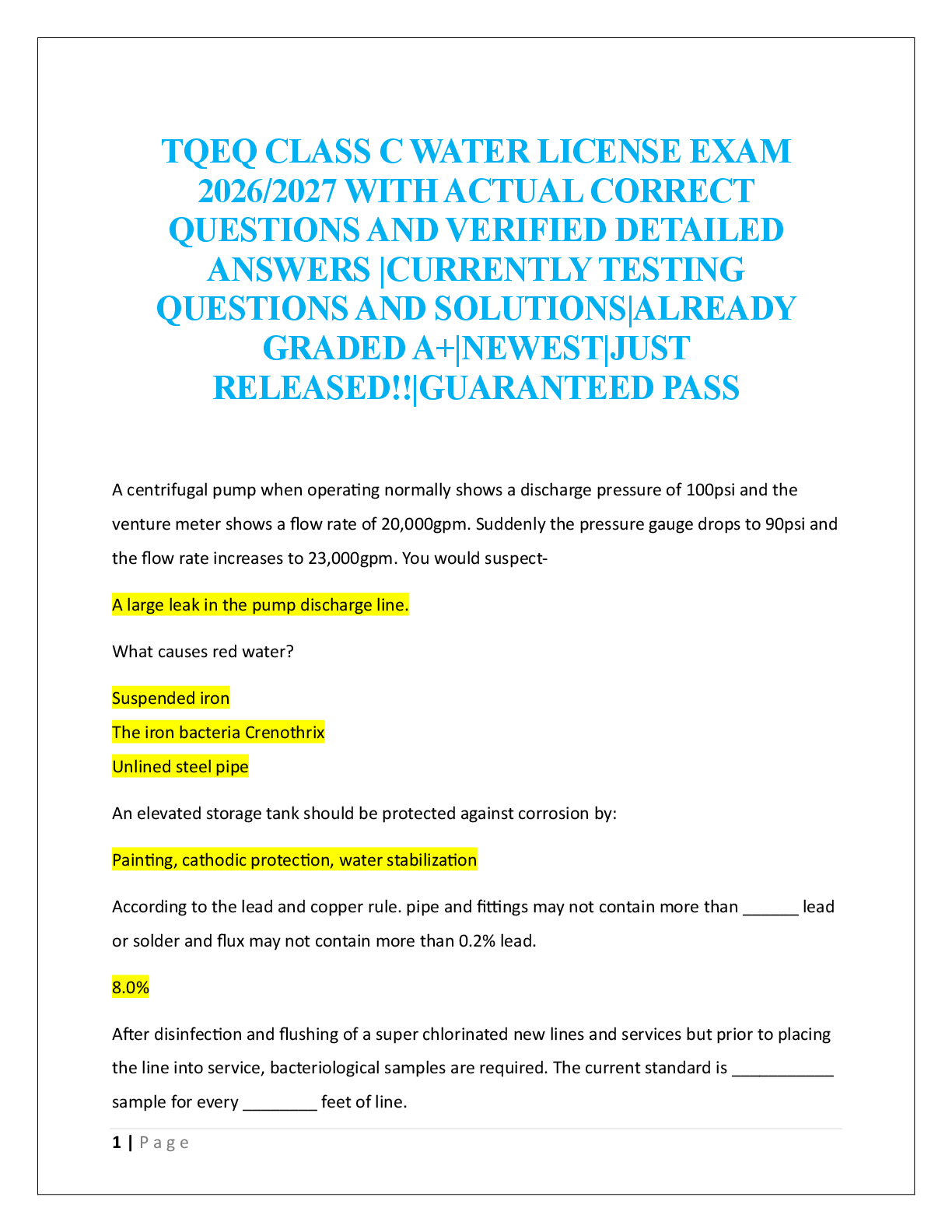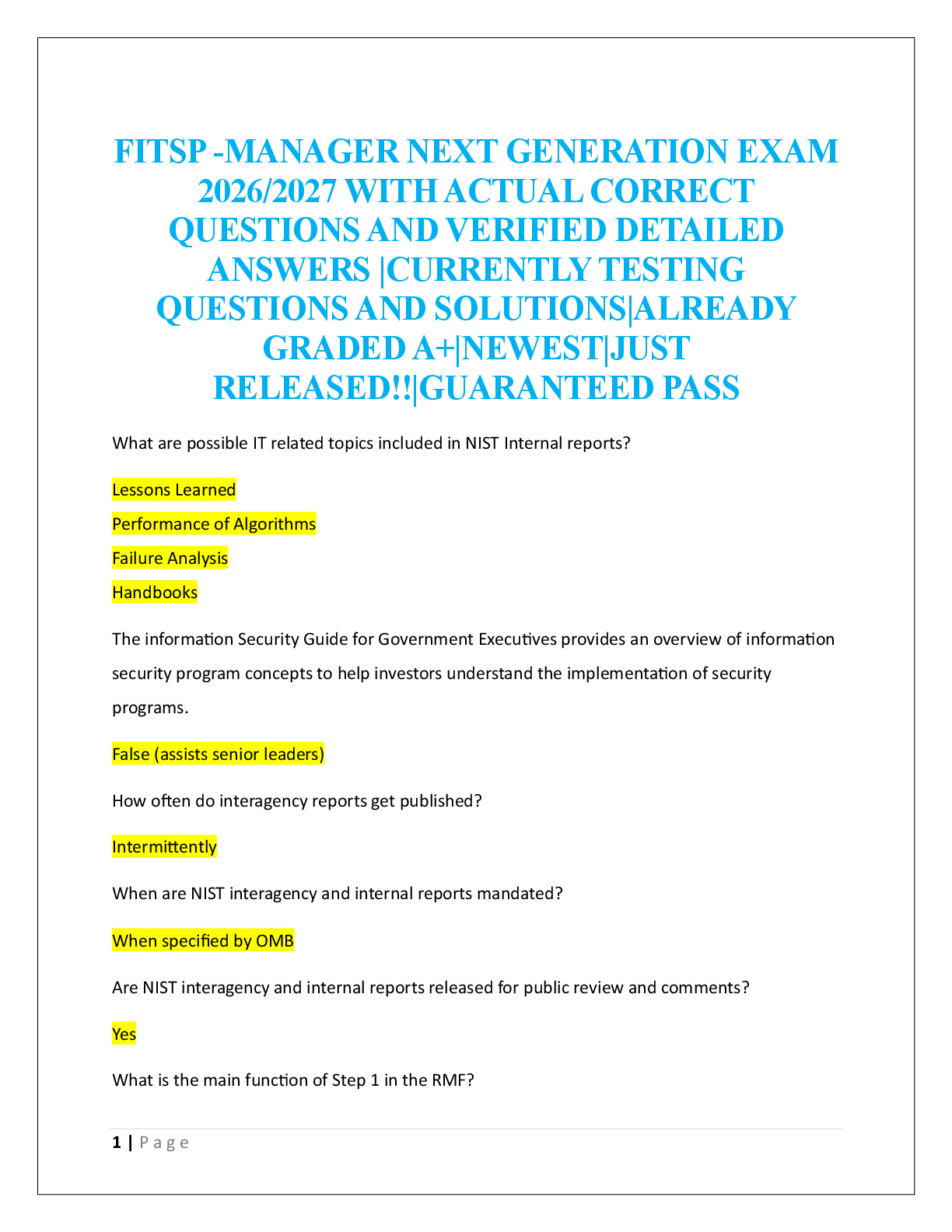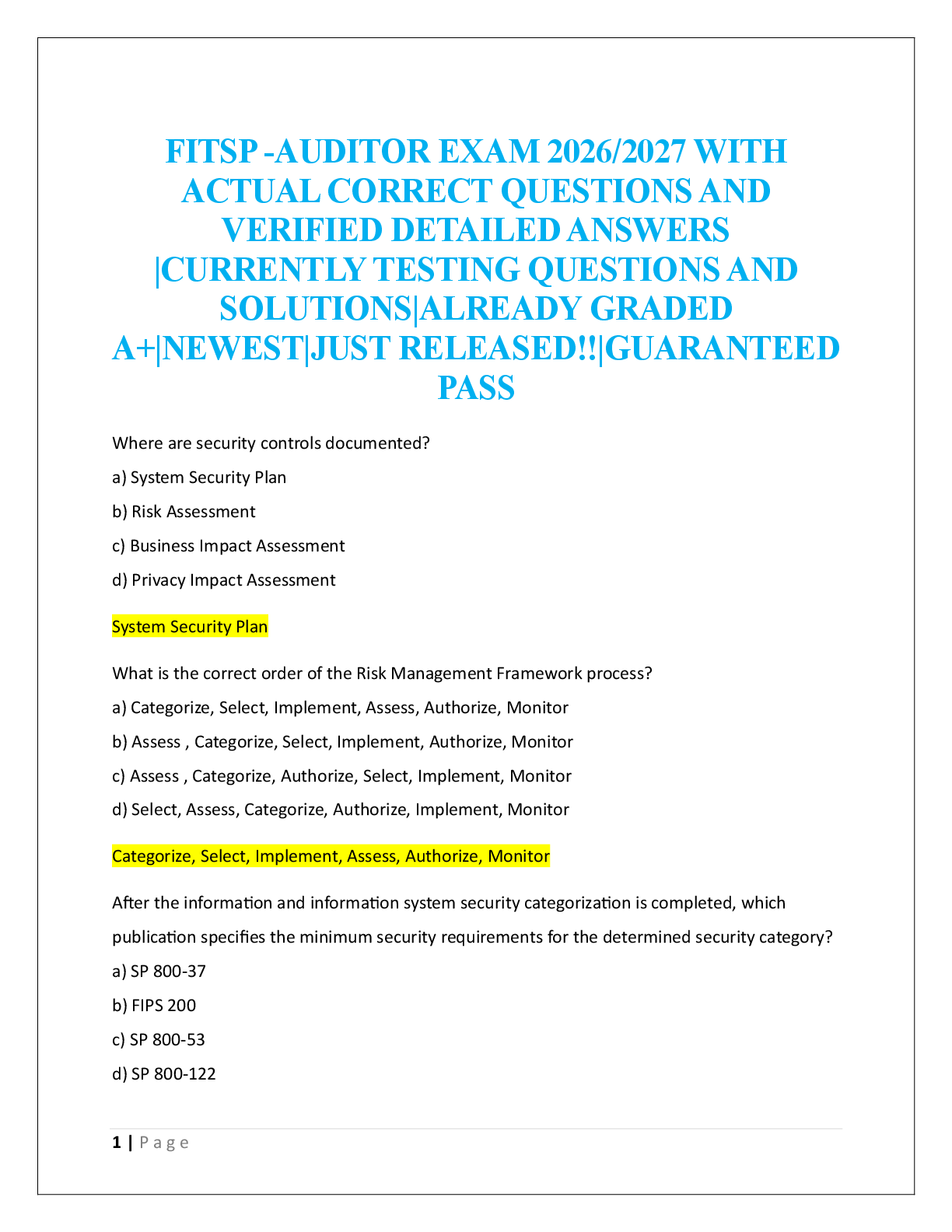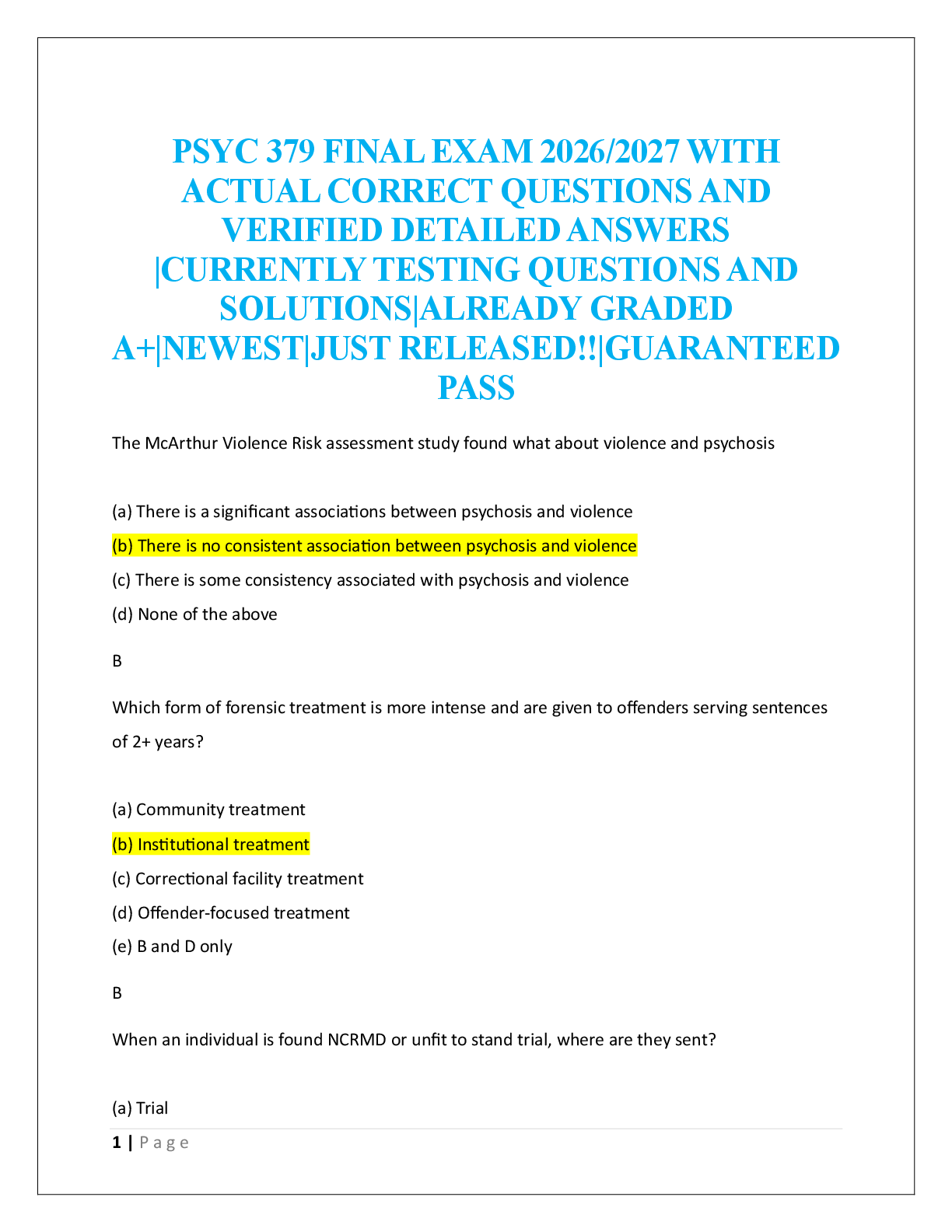PCCN Practice Exam Notes (2025) Questions & Answers, Rated 100%
Document Content and Description Below
PCCN Practice Exam Notes (2025) Questions & Answers, Rated 100%-Pt on Vtach, HR 135, RR 32, BP 90/48, conscious but c/o dizziness, recent K+ lvl is 3.4. What action would you do first? a. emergent de ... fib b. amio 300mg IVP c. emergent cardioversion d. hang 10 mEq KCL/50mL D5W - C The nurse notes the following when analyzing a patient's telemetry strip: HR, 65/min and regular; PR interval, 0.22 seconds; QRS complex, 0.10 seconds; QTc, 0.52 seconds. Which of the following dysrhythmias is the patient at risk for? A. Atrial fibrillation because the PR interval is wide B. Sinus arrhythmia because the QRS complex is narrow C. Torsades de pointes because the QTc is wide D. Third-degree heart block because the PR interval is narrow - C. QT measurements reflect the duration of ventricular repolarization. Lengthening of QT interval is associated with arrhythmias, adverse cardiac events, and increased mortality because a longer QT duration places the vulnerable ventricular repolarization phase close to the next depolarization, increasing the likelihood of R-on-T. The most common arrhythmia that occurs with prolonged QTc is torsades de pointes. Atrial fibrillation, sinus bradycardia, and third-degree heart block are not typically associated with prolonged ventricular repolarization (QTc >0.50 seconds). A patient with chronic obstructive pulmonary disease (COPD) is admitted for worsening dyspnea and possible pneumonia. The current ABG results are pH, 7.19; PaO2, 52 mm Hg; PaCO2, 68 mm Hg; HCO3 - , 32 mmol/L. The nurse would interpret these results as A. Metabolic acidosis with hypoxemia B. Respiratory acidosis with hypoxemia C. Respiratory alkalosis with typical oxygenation for a COPD patient D. Metabolic alkalosis with typical oxygenation for a COPD patient - B. Based on the ABG analysis, the patient is experiencing a respiratory acidosis with hypoxemia most likely due to the pneumonia. A pH of 7.19 indicates acidosis; a PaCO2 of 68 mm Hg is elevated and a cause of acidosis; an HCO3 - of 32 mmol/L indicates renal compensation; a PaO2 of 52 mm Hg indicates hypoxemia 76-year-old patient is receiving gentamicin and linezolid for an infection. Which of the following potential complications is the most important for the nurse to monitor this patient for? A. Acute delirium B. Acute kidney injury C. Acute hepatic failure D. Sepsis - B. Gentamicin is a nephrotoxic agent that places patients at risk for acute kidney injury, and this risk is increased in older patients. Acute delirium (A), liver failure (C), and sepsis (D) are all complications that could occur in an older adult with an infection but would not be caused by the administration of an antibiotic. An older patient is experiencing delirium 24 hours following hip replacement. Which intervention might worsen the patient's condition? A. Removing any unnecessary tubes and equipment from the room B. Assessing and treating the patient's pain every 2 hours C. Ensuring that the patient has the means to call for help D. Loosely applying soft restraints - D. Older patients are at increased risk for delirium during acute hospitalization. Interventions to manage acute delirium include removing or camouflaging tubes, removing unnecessary equipment, frequently reorienting the patient, and ensuring that the call bell is consistently within reach, assessing and treating pain effectively, and encouraging mobility and involvement in activities of daily living. Restraining the patient is contraindicated in the care of patients with delirium. A patient shows a new slight facial droop and the patient's right arm is weaker than the left. A priority intervention would be to A. Obtain a serum glucose level B. Obtain a full set of vital signs C. Initiate the stroke protocol D. Initiate the code response team - C. The stroke protocol should be activated as soon as signs of stroke are identified in a patient. Initial signs of stroke include facial droop, arm down drift, and garbled speech. For best outcomes, the time elapsed between initials signs of stroke and treatment must be as short as possible. [Show More]
Last updated: 11 months ago
Preview 4 out of 13 pages

Loading document previews ...
Buy this document to get the full access instantly
Instant Download Access after purchase
Buy NowInstant download
We Accept:

Also available in bundle (1)
Click Below to Access Bundle(s)
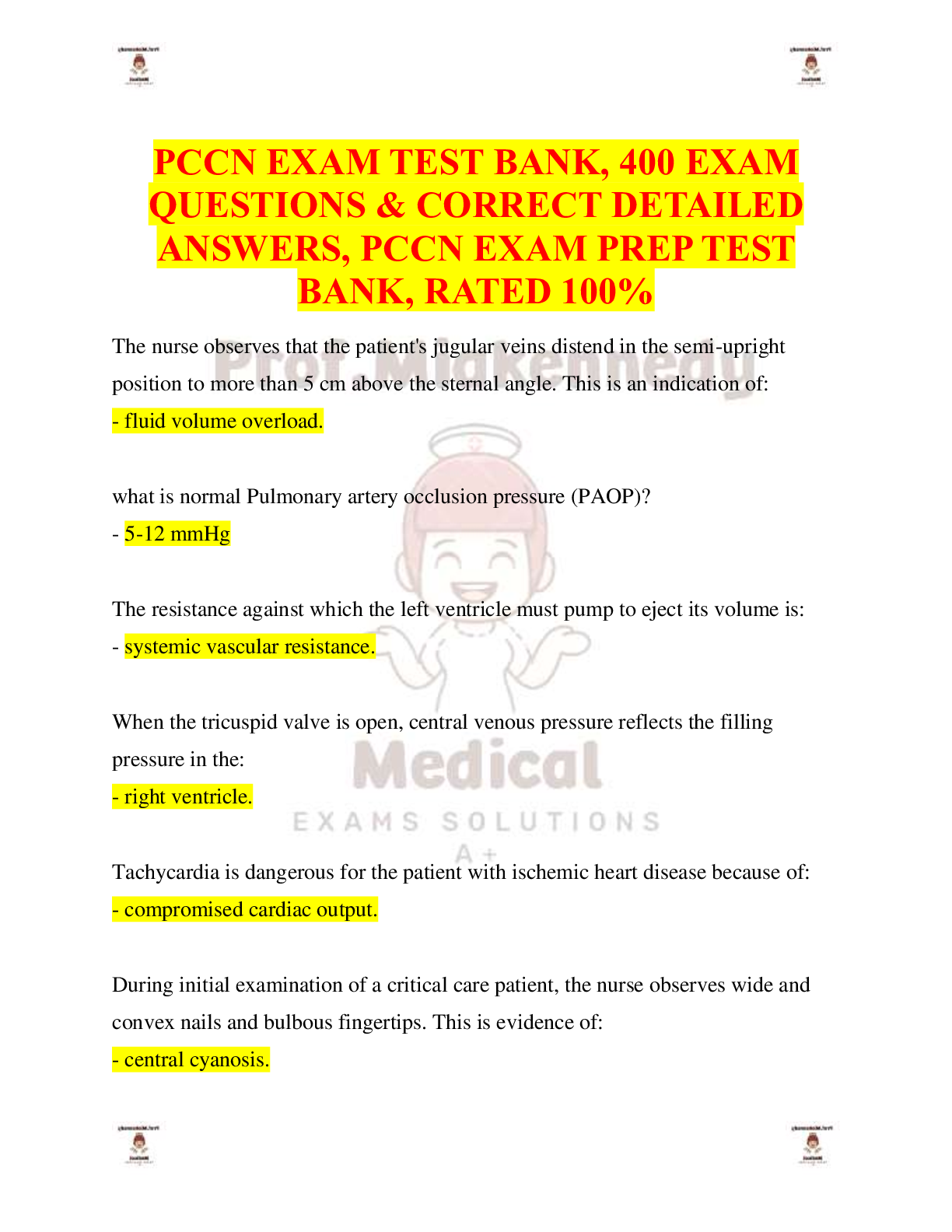
BUNDLE: Progressive Care Certified Nurse (PCCN) Exam TESTBANK, PCCN Actual Exam, Exam Prep, PCCN Exam 1, PCCN Final Exam, Final Exam Review, PCCN Practice Exam Notes 2025 Answered & Adult CCRN/PCCN Certification Practice Test Exam Questions & Answers, ALL RATED 100%
BUNDLE: Progressive Care Certified Nurse (PCCN) Exam TESTBANK, PCCN Actual Exam, Exam Prep, PCCN Exam 1, PCCN Final Exam, Final Exam Review, PCCN Practice Exam Notes 2025 Answered & Adult CCRN/PCCN Ce...
By PROF 11 months ago
$53.5
8
Reviews( 0 )
$12.50
Can't find what you want? Try our AI powered Search
Document information
Connected school, study & course
About the document
Uploaded On
Jan 02, 2025
Number of pages
13
Written in
All
Additional information
This document has been written for:
Uploaded
Jan 02, 2025
Downloads
0
Views
43

